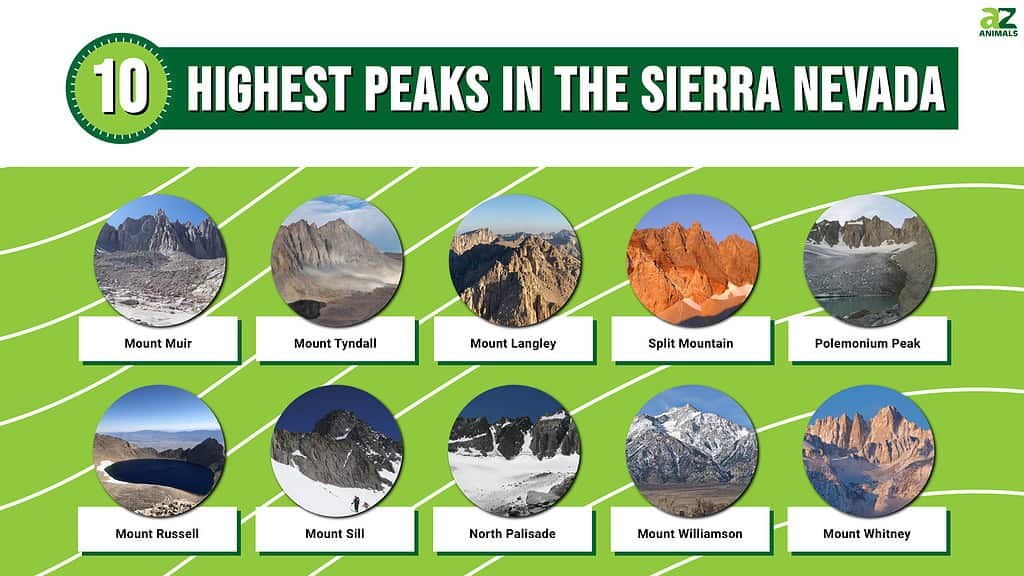
Located in the western region of the United States, the Sierra Nevada is a stunning mountain range that lies in California and Nevada. It also forms part of the American Cordillera and is 400 miles long and up to 80 miles wide. Although the size of the mountains varies, the Sierra Nevada also includes the highest point in the contiguous United States. So, let’s discover the highest peaks in the Sierra Nevada!
10. Mount Muir — 14,018 feet
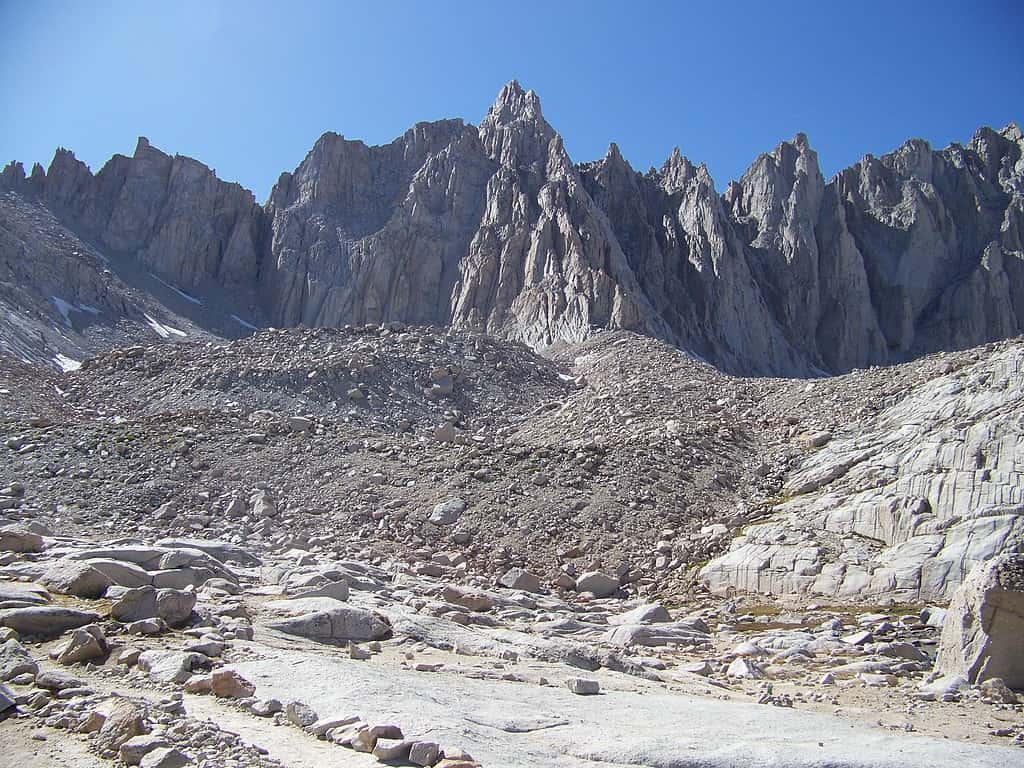
Mount Muir is located close to the popular Mount Whitney Trail.
©Cullen328, CC BY 3.0 via Wikimedia Commons – License
The first mountain on our list is Mount Muir which is named after geologist John Muir. Mount Muir is 14,018 feet high and the east side of the mountain features a vertical cliff of almost 1,400 feet. Mount Muir is one of the lesser-known peaks in the Sierra Nevada, despite its close proximity to the Mount Whitney Trail.
9. Mount Tyndall — 14,025 feet
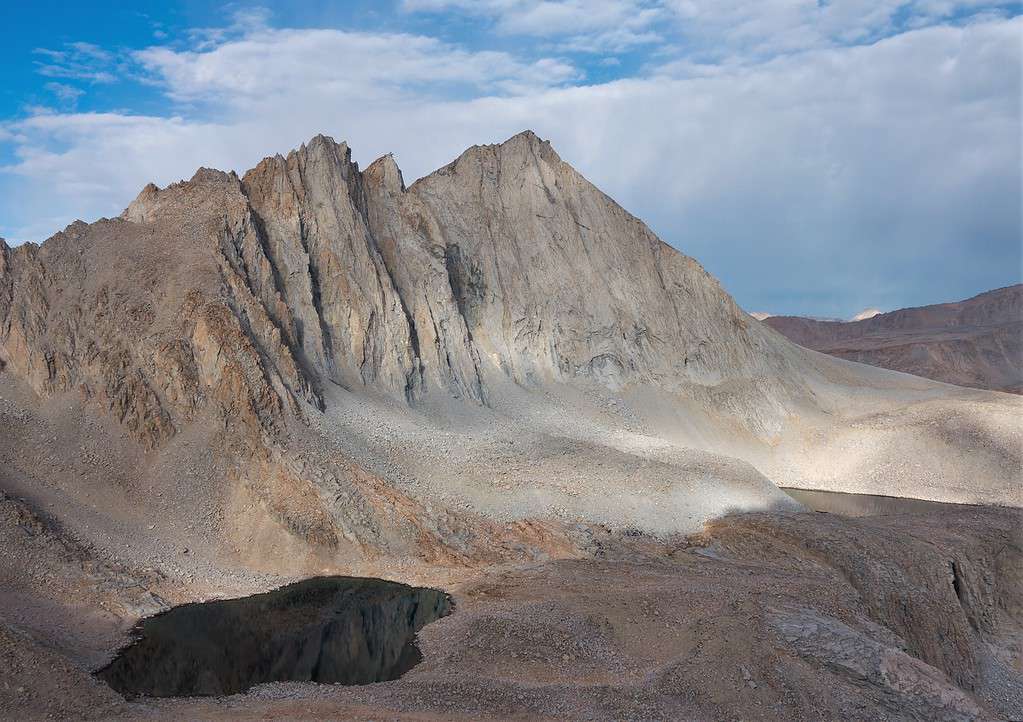
First climbed in 1864, Mount Tyndall was originally mistaken for the larger Mount Whitney.
©Jesse Wagstaff, CC BY 2.0, via Wikimedia Commons – License
Mount Tyndall stands at 14,025 feet and is located on the Sierra Crest and is just six miles from the larger Mount Whitney. It is considered to be an easy mountain to hike and climb with the easiest route being the northwest ridge from Shepherd’s Pass. The eastern side of the mountain is steeper and a little more difficult to climb. Many animals live on the mountain, although some of the most common are bighorn sheep which traverse the slopes with ease. Mount Tyndall was not climbed until 1864 when Clarence King and Richard Cotter were attempting to climb Mount Whitney but eventually realized that they had climbed the wrong mountain.
8. Mount Langley — 14,026 feet
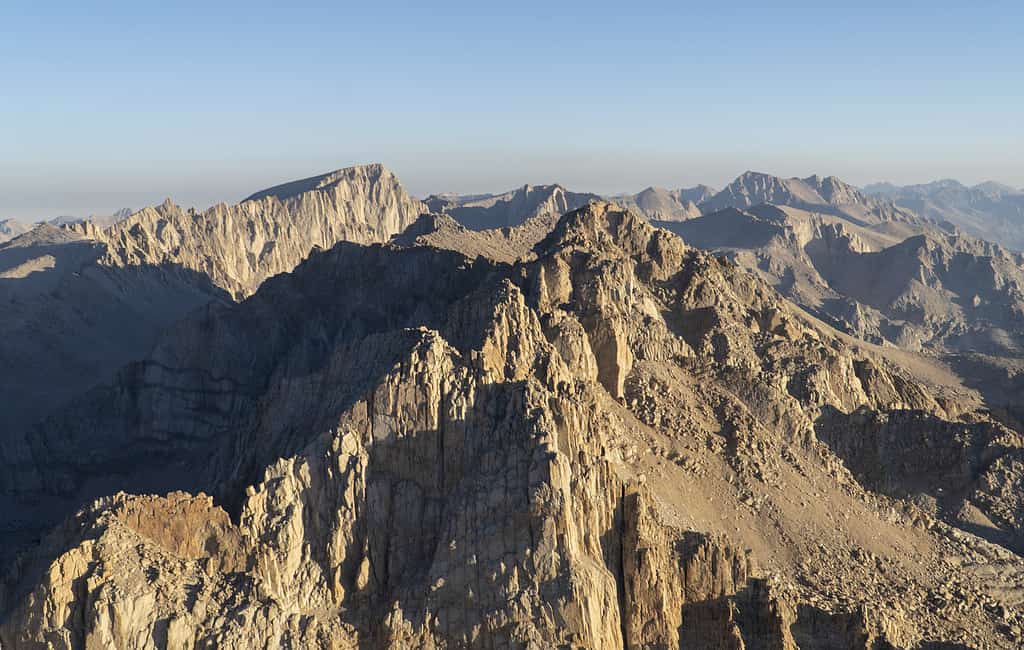
Mount Langley is the southernmost mountain above 14,000 feet in the United States.
©Kylie Stewart, CC BY 2.0, via Wikimedia Commons – License
Another mountain on the Sierra Crest is Mount Langley which reaches 14,026 feet. Mount Langley is considered to be the southernmost “fourteener” in the entire United States. In the 1870’s it was initially confused with Mount Whitney and named as such. Once the mistake was realized it then went by the names of Mount Corcoran (a name now attached to a smaller mountain in the Sierra Nevada range), Cirque Peak, and Sheep Mountain. However, its current name was made official in 1943. Mount Langley is one of the easier mountains on this list to climb and is popular with hikers and backpackers.
7. Split Mountain — 14,058 feet
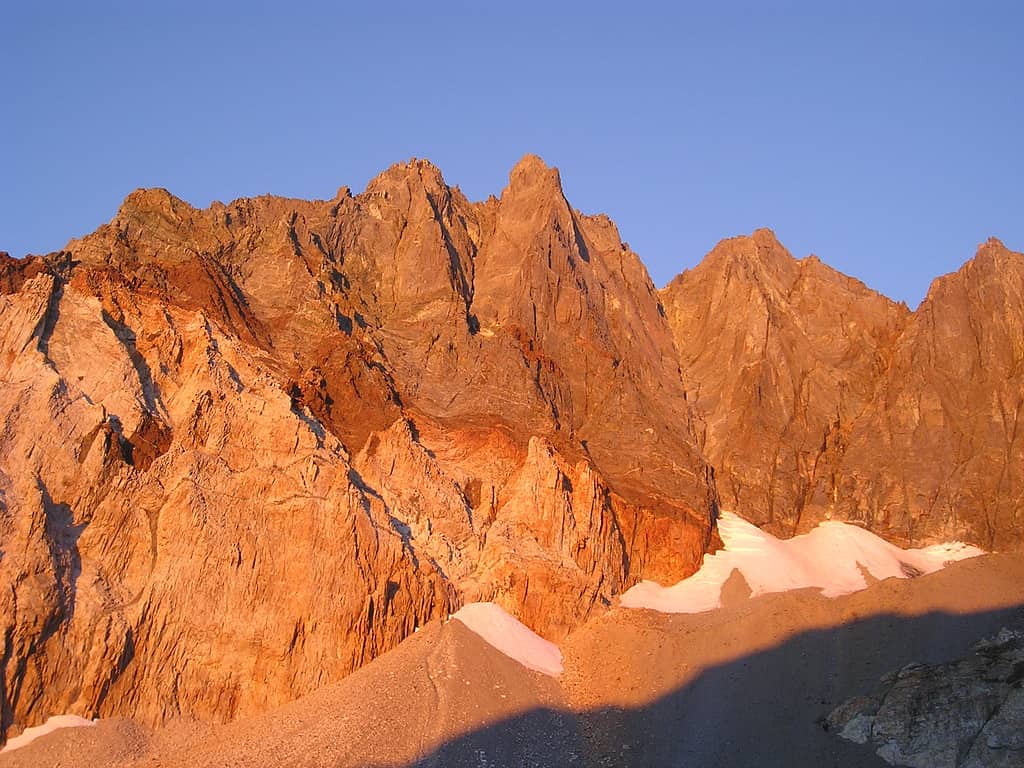
Split Mountain is named because it has two distinctive peaks.
©Jonathan Fox, CC BY-SA 2.0, via Wikimedia Commons – License
Standing 14,058 feet high, Split Mountain gets its name for its twin peaks. Split Mountain is another popular mountain to climb, although areas can be challenging due to the steep talus slopes and loose rocks on the approach to the summit. It is generally considered to be a class two or class three climb. Although it is possible to climb in one day, most people tend to camp overnight at the stunning Red Lake and then ascend the mountain the next morning.
6. Polemonium Peak — 14,080 feet

Polemonium Peak lies just to the east of the larger North Palisade mountain.
©Jonathan Fox from Carson City, United States, CC BY-SA 2.0, via Wikimedia Commons – License
Next, we have Polemonium Peak which is located in the Palisades region of the Sierra Nevada range. Polemonium Peak is 14,080 feet high and lies just to the east of the better-known North Palisade. However, Polemonium Peak is still popular due to its prominence as another “fourteener”. Polemonium Peak can be accessed from both Bishop’s Pass Trail and the north fork of Big Pine Creek.
5. Mount Russell — 14,088 feet

The summit of Mount Russell offers a stunning view of Tulainyo Lake.
©Penitentes, CC BY-SA 4.0, via Wikimedia Commons – License
The fifth-highest peak in the Sierra Nevada range is Mount Russell which reaches 14,088 feet. It is located on the Sierra Crest, less than a mile from Mount Whitney. It is not as popular with hikers and climbers as Mount Whitney. With several sheer cliffs and class three and class four routes it is not an easy climb to undertake.
4. Mount Sill — 14,153 feet

Mount Sill’s Northern Paiute name means “Guardian of the Valley.”
©Jonathan Fox, CC BY-SA 2.0, via Wikimedia Commons – License
The second-highest peak in the Palisades is Mount Sill which stands at 14,153 feet. It has a distinctive thumb-shaped appearance and is also called Nen-i-mish by the Northern Paiute people, meaning Guardian of the Valley. Mount Sill is popular with climbers and there are several different routes up the mountain, ranging between class two to class five. The routes can be slippery in places, owing to the loose talus slopes.
3. North Palisade — 14,242 feet
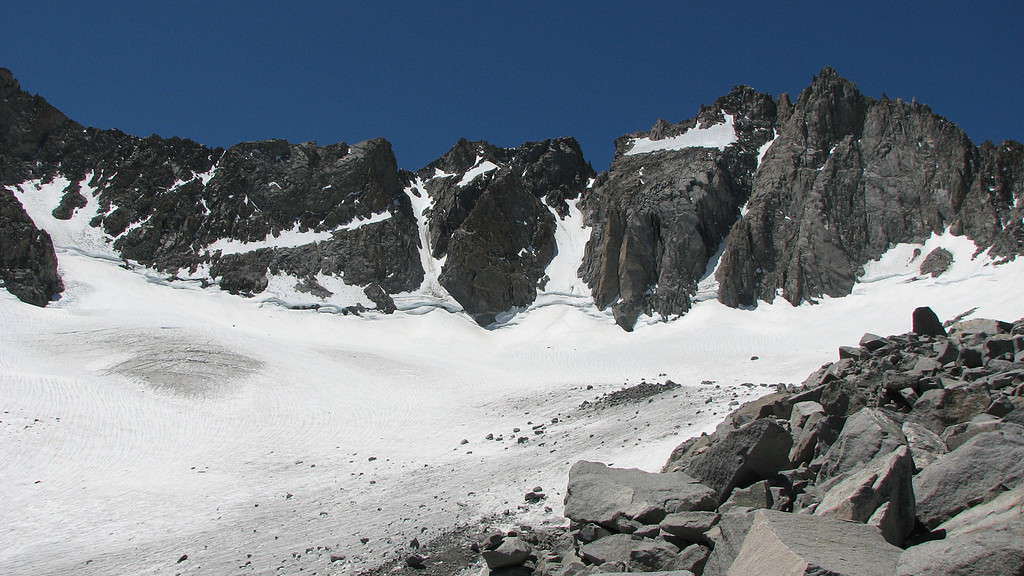
North Palisade is a challenging climb featuring class four terrain.
©JeffreyMRoe, Public domain, via Wikimedia Commons – License
The next mountain on our list and the highest in the Palisades is North Palisade which is 14,242 feet high. North Palisade features a glacier — Palisade Glacier — on its northeast side as well as several tough class four climbing routes. The mountain was first climbed in 1903 by Joseph LeConte, James Hutchinson, and James Moffitt. Following the climb, LeConte referred to the area as North Palisade and it has been known as such ever since.
2. Mount Williamson — 14,379 feet
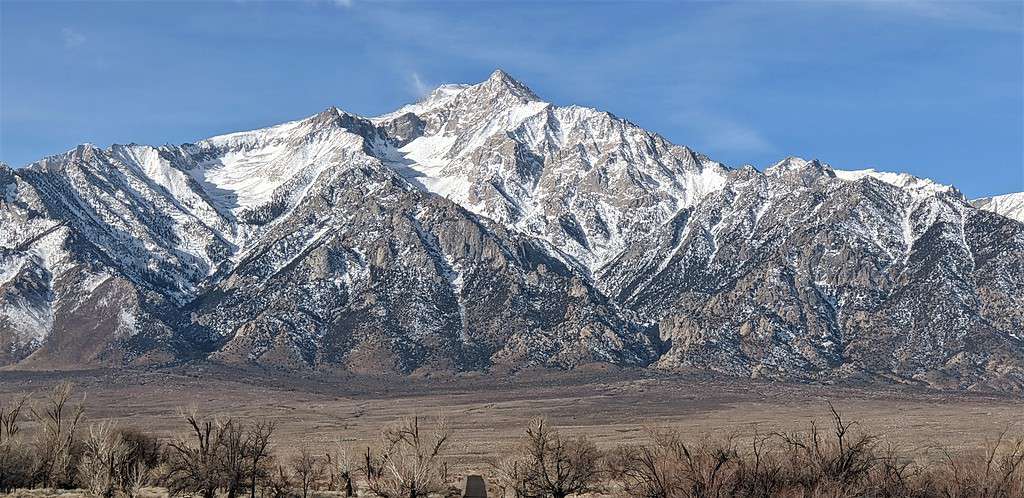
Mount Williamson is home to an endangered subspecies of bighorn sheep.
©Mark Gunn, CC BY 2.0, via Wikimedia Commons – License
The second highest peak is Mount Williamson which is 14,379 feet high. It is located in the John Muir Wilderness area within the Inyo National Forest. Although it lacks the popularity of its taller neighbor, Mount Williamson is frequented by hikers and climbers who fancy the challenge of class three terrain. Mount Williamson is home to the rare Sierra Nevada bighorn sheep — a subspecies of bighorn sheep — and they can often be seen on its slopes. In the winter they are more likely to be found on the lower portion of the mountain as the heavy snowfall drives them down in seek of shelter and better grazing.
1. Mount Whitney — 14,505 feet

Mount Whitney is the highest point in California.
©iStock.com/dpenn
The highest peak in the Sierra Nevada is Mount Whitney which is 14,505 feet high. It is also the highest mountain in the contiguous United States. Mount Whitney is located on the border between Inyo and Tulare counties and its western slope forms part of the Sequoia National Park. The eastern slope is much steeper and is mostly class four and five terrains. However, the Mount Whitney Trail offers the easiest (class one) and most popular route to the summit.
Summary of the 10 Highest Peaks in the Sierra Nevada
| Rank | Mountain | Height |
|---|---|---|
| #1 | Mount Whitney | 14,505 feet |
| #2 | Mount Williamson | 14,379 feet |
| #3 | North Palisade | 14,242 feet |
| #4 | Mount Sill | 14,153 feet |
| #5 | Mount Russell | 14,088 feet |
| #6 | Polemonium Peak | 14,080 feet |
| #7 | Split Mountain | 14,058 feet |
| #8 | Mount Langley | 14,026 feet |
| #9 | Mount Tyndall | 14,025 feet |
| #10 | Mount Muir | 14,018 feet |
The photo featured at the top of this post is © iStock.com/DCrane08
Thank you for reading! Have some feedback for us? Contact the AZ Animals editorial team.







